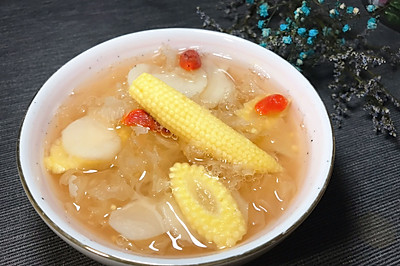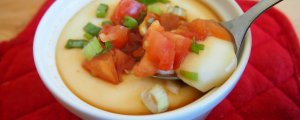
Home made wine (fermented glutinous rice) for beauty and beauty. Warm body and mind (with pearl balls)
(86692 views)
Jiuniang, also known as rice wine and mash. It comes from glutinous rice. After time and fermentation of koji, it becomes a kind of food that warms women's body and mind, beautifies and beautifies their faces. Some parturients have blood stasis, weak constitution, insufficient breast milk, etc. they can also eat some wine everyday to supplement vitality and help the body recover. In the cold winter, it's so comfortable to eat a bowl of hot wine. The girl who often eats wine will also be a girl who looks like peach blossom. Brewing. It seems very simple. It's not easy to do it well. If you don't pay a little attention, you may get moldy and hairy. Today, I will share some of my experience in home brewing. In this article, I also wrote my own way of making pearl balls brewed at home. You can also refer to it. Let's start with the specific raw materials and methods. Please read the notes carefully. The last little tips must be finished. I
Cooking ingredients
Cooking Steps

Step1:Wash the glutinous rice with water. Soak in cold water for about 20 hours (water can be changed twice in the middle of the process). Until the glutinous rice can be easily crushed by hand (as shown in the figure). Note - in winter, it takes about 20 hours to soak the glutinous rice until it can be easily crushed. It's almost a night's soak in summer. It's OK to use cold water when soaking. You can change water 23 times in the middle.

Step2:Put gauze on the steamer. Spread out the soaked glutinous rice on the gauze. Cover the pot and steam for about 30 minutes. Note - this 30 minutes is calculated from the time of firing. Steam in high heat. After boiling in water, turn into medium low heat.

Step3:When the glutinous rice is steamed, open the lid and let it cool a little. Note - the degree of steamed glutinous rice. In addition to the time I wrote in the previous step for reference, it can also be seen from the degree of hardness and softness. Just steam the glutinous rice. But it should be a little harder. Don't steam it too soft and stick it together. That's not good for the next step. If the steamed glutinous rice is too dry, sprinkle some water on it and steam it for a while.

Step4:When you steam the glutinous rice and cool it a little, you can prepare the starter and utensils. This is my usual koji. Many large supermarkets and online can be easily bought. In a moment, all the utensils that are to be filled with glutinous rice mixed with koji shall be cleaned with clear water, and then dried thoroughly. Make sure that the hands and utensils of the producer are free of oil and raw water. They are clean. This is a key point. It is also an important step related to the success of brewing. Please pay attention to this step when making. A friend with a sterilizer at home can put the cleaned utensils in the sterilizer for sterilization and air drying, which is more safe. Attention - if the utensils are cleaned with detergent, make sure to wash them with more water. Make sure they are clean. Then dry them with clean kitchen paper. The manufacturer's hands must also be cleaned and dried. (emphasize the importance of this point again. Please pay attention.)

Step5:Mash the steamed glutinous rice and put it at about 30 ℃ (it's not hot in winter. It's cool in summer). Pour the glutinous rice into the utensil. Pour in the mineral water and mix well. Then add in the koji and mix well.

Step6:Attention - steamed glutinous ric

Step7:

Step8:

Step9:

Step10:

Step11:

Step12:

Step13:

Step14:

Step15:

Step16:

Step17:

Step18:

Step19:
Cooking tips:Several key points for attention in brewing production. 1. All the utensils used (including chopsticks and spoons that touch the glutinous rice koji) and the hands of the producer must be clean, free of raw water and oil. If there is a disinfecting cabinet, the utensils can be disinfected and dried. Mix the steamed glutinous rice and koji with mineral water or pure water. Do not use tap water. (I haven't tried it before. It's said that it's OK) 3 to make wine. First, pay attention to cleanness. Second, pay attention to heat preservation (especially in winter). Grasp these two points. It's easy to succeed. In winter, there is no heating in southern cities. You can wrap the utensils with cotton clothes, blankets or quilts. Put them near the electric heating. They can be fermented for about 36 hours. (when using electric heating, do not directly cover the cotton padded clothes, quilts, etc. on the electric heating to avoid fire. It is hereby reminded) 5 in winter, there is heating in northern cities. Generally, the room temperature can reach 222
 Chinese Food
Chinese Food












